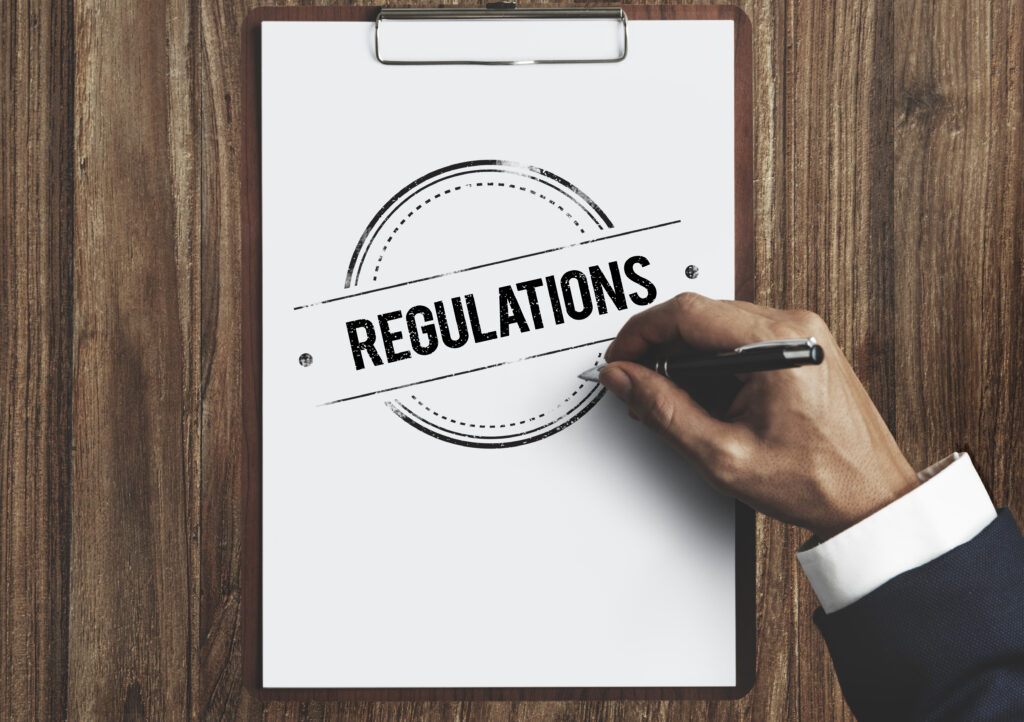
In the digital age, employees’ social media presence can be a double-edged sword for companies. While it can amplify brand reach and engagement, one wrong move could lead to reputation damage and legal issues. Understanding the do’s and don’ts of employee posts on social media is crucial for both individuals and organizations.
This article delves into the intricacies of navigating this fine line effectively. From highlighting best practices to exploring real-life examples, we’ll uncover the impact of employee social media activity on businesses. Let’s learn how to strike the right balance between personal expression and professional representation in the online realm.
Table of Contents
Benefits of Employee Engagement
Personal Branding
Employees engaging in social media advocacy can greatly benefit from building their personal brand. By sharing insights, experiences, and expertise online, they can establish themselves as thought leaders in their industry. This not only boosts their credibility but also opens up opportunities for career growth and advancement.
Sharing relevant content related to their field of work on social media can help employees showcase their skills and knowledge to a larger audience, including employers and organizations. This exposure can lead to recognition from industry peers, potential clients, or even recruiters seeking top talent. Actively engaging with followers through comments and discussions on social media sites can further enhance their reputation and visibility online.
Network Expansion
Engaging in social media advocacy allows employees to expand their network beyond the confines of their workplace. By connecting with professionals from diverse backgrounds and industries, they can gain valuable insights, learn about new trends, and even discover potential collaboration opportunities.
Through active participation in online communities and industry-specific groups, employees can engage with like-minded individuals who share similar interests or challenges. These connections not only provide a platform for knowledge exchange but also foster a sense of community and support among peers. Building a strong professional network can offer long-term benefits in terms of career development and growth.

Company Recognition
Employee advocacy plays a crucial role in strengthening the company’s brand and online presence. When employees share positive experiences, achievements, or updates about the organization on social media platforms, it helps create a positive perception among external audiences.
Crafting Shareable Content
Content Variety
Encourage employees to capture and share unique moments that exemplify the company’s values. Highlight team achievements, community involvement, and fun office activities.
Craft compelling posts that showcase the brand’s culture authentically. Use a mix of photos, videos, and stories to give a glimpse into daily operations.
Empower employees to be ambassadors for the brand by sharing their experiences on social media. Provide guidelines and support for posting about work-related events.

Tools and Resources
Provide employees with tools and resources to facilitate sharing company updates on various social networking platforms. Implement user-friendly platforms that enable seamless sharing across different social networking sites. Offer training sessions to familiarize employees with these tools, ensuring they can efficiently share content.
Equip employees with a centralized platform where they can access the latest company updates and announcements easily. Ensure the platform is mobile-friendly for convenient access, allowing employees to share content even while on the go. By providing these resources, you empower employees to be effective brand advocates online.
Motivating Employee Advocacy
Implement a recognition program to acknowledge employees who actively engage in sharing company-related posts. Recognizing their efforts publicly can motivate others to follow suit, creating a culture of community engagement within the organization. Consider rewarding top contributors with incentives such as gift cards or additional paid time off.
By acknowledging and rewarding employees for their contributions, you reinforce the value of employee advocacy within the company. This fosters a sense of pride among employees, leading to increased loyalty and commitment towards promoting the company’s brand image. Incentivizing participation in sharing company content can significantly boost followership and engagement levels.
Incorporate a gamification element into the sharing process by creating friendly competitions among teams or departments. Track and display metrics such as the most shared post or highest engagement rate to encourage healthy competition. This not only drives employee participation but also enhances overall knowledge sharing within the organization.
Recognition and Appreciation
Showcase Employee Success
Showcasing employee achievements on social media platforms is a powerful way to acknowledge their hard work and dedication. By highlighting these diverse success stories, companies can not only celebrate individual contributions but also demonstrate the variety of career development opportunities available within the organization.
Fostering a Positive Work Environment
When employers feature their team members’ accomplishments online, it creates a positive work culture. Employees feel valued and motivated to excel in their roles, leading to increased morale and productivity.

Building Brand Reputation
Sharing employee success stories through video content humanizes the brand. It provides a personal touch that resonates with audiences and strengthens the connection between the company and its customers.
Inspiring Career Growth
By highlighting stories of personal growth within the organization, companies can inspire others to strive for excellence. These narratives serve as motivation for individuals looking to progress in their careers.
Building a Community
Themed Days
Organizing themed social media days can significantly boost employee engagement. By dedicating specific days to various topics, employees are encouraged to participate actively, fostering a sense of community and belonging within the organization. These themed days can range from casual events like “Throwback Thursday” to more structured activities centered around work-related achievements.
Fun and Interactive Challenges
Encouraging employees to partake in concerted activity through fun and interactive social media challenges is an effective way to enhance engagement. These challenges can include photo contests, trivia quizzes, or caption competitions related to the chosen theme for the day. By incorporating elements of gamification, employees are motivated to interact with each other and showcase their creativity.

Promoting Team Spirit
Themed days serve as a platform to promote team spirit and unity among employees. When everyone participates in dressing up according to the theme or sharing relevant content on social media, it creates a shared experience that strengthens bonds within teams.
Moreover, themed days allow employees to express their personality and interests outside of their regular work responsibilities, fostering a more inclusive and vibrant workplace culture.
Extend Reach Beyond Office Walls
Connect Audience
Expand social media efforts to connect with a wider audience beyond the workplace. Utilize various platforms such as LinkedIn, Twitter, TikTok and Facebook to engage with a diverse network.
Interact with potential clients and industry professionals to broaden the company’s reach. Engage in meaningful conversations and share valuable insights to attract new connections.
Industry Influencers
Engage with industry influencers and thought leaders to amplify company reach. Collaborate with experts in the field to increase visibility and credibility within the industry.
Partnering with influencers can help boost brand awareness and establish the organization as a key player in the market. Leverage their expertise to gain exposure to a larger audience.
Community Interaction
Foster a sense of community by interacting with followers from diverse backgrounds. Encourage discussions, respond to comments, and acknowledge feedback from followers.
Create a welcoming environment where individuals feel valued and heard. Build relationships with online communities to strengthen brand loyalty and trust.

Establish Clear Social Media Guidelines
Policy Creation
Create detailed guidelines for employees on using social media platforms both during and outside of work hours. Ensure the policy aligns with company values.
Develop a comprehensive document that includes specific examples of appropriate and inappropriate social media behavior. This clarity will help employees understand expectations.

Consequences Definition
Clearly outline the repercussions of breaching the established social media guidelines. Include disciplinary actions for violations to maintain professionalism and safeguard the company’s reputation.
Ensure that consequences are fair and consistent for all employees to promote a sense of equality within the workplace. Transparency is key in enforcing these guidelines effectively.
Examples of Posts
Provide examples of positive social media posts that showcase employees’ achievements or highlight company events. Encouraging such posts can boost morale and promote a positive image online.
On the other hand, illustrate instances of inappropriate posts, such as disclosing confidential information or making discriminatory remarks. These examples serve as cautionary tales for employees to avoid similar mistakes.
Address Social Media Misconduct Carefully
Protocol Establishment
Establishing a clear protocol for addressing social media misconduct is crucial in maintaining a positive work environment. By setting guidelines on acceptable online behavior, companies can mitigate potential issues before they escalate.
Ensuring that employees are aware of the consequences of violating these guidelines can serve as a deterrent against harassment and negative comments online. This proactive approach fosters a culture of respect and professionalism within the organization.
Thorough Investigations
Before implementing any disciplinary measures for social media violations, it is essential to conduct thorough investigations. Rushing into action without fully understanding the context of the situation can lead to unfair treatment and legal repercussions.
By gathering all relevant information and considering different perspectives, employers can make informed decisions regarding appropriate disciplinary actions.
Training Programs
Providing attention training on responsible social media usage is an effective way to prevent future misconduct incidents. Educating employees on the importance of maintaining confidentiality, refraining from sharing personal information, and avoiding controversial topics online can help minimize risks.
Training sessions should emphasize the impact of one’s online presence on both personal reputation and the company’s image. By promoting awareness and accountability, organizations can create a more positive online environment for their employees.

Summary
By encouraging your team to share company content, showcasing their success stories, and boosting engagement with themed days, you can make your company culture shine beyond the office walls. Establishing clear social media guidelines and addressing misconduct carefully are crucial steps in this journey. Remember, your employees are not just workers; they are the best advocates for your brand.
Now it’s time to put these strategies into action. Empower your employees to be the voice of your company online, creating a positive and engaging presence that resonates with your audience. With the right approach, your team can drive organic growth and build a strong community around your brand.
Related Article:
The following article may contain the author’s opinions and interpretations of the subject matter. Any of the products, services, or platforms mentioned is not sponsored or affiliated.
Featured Image courtesy of wayhomestudio on Freepik
